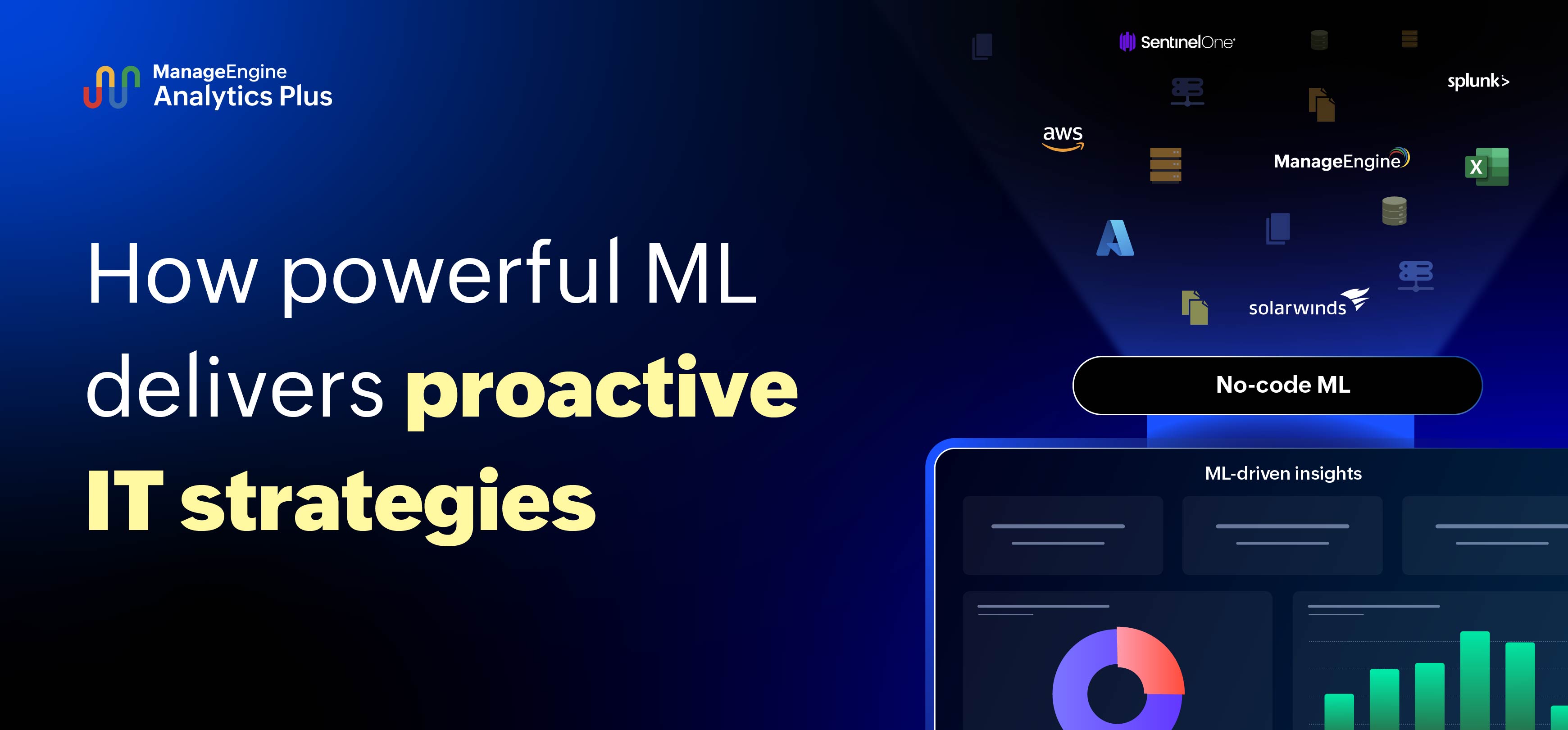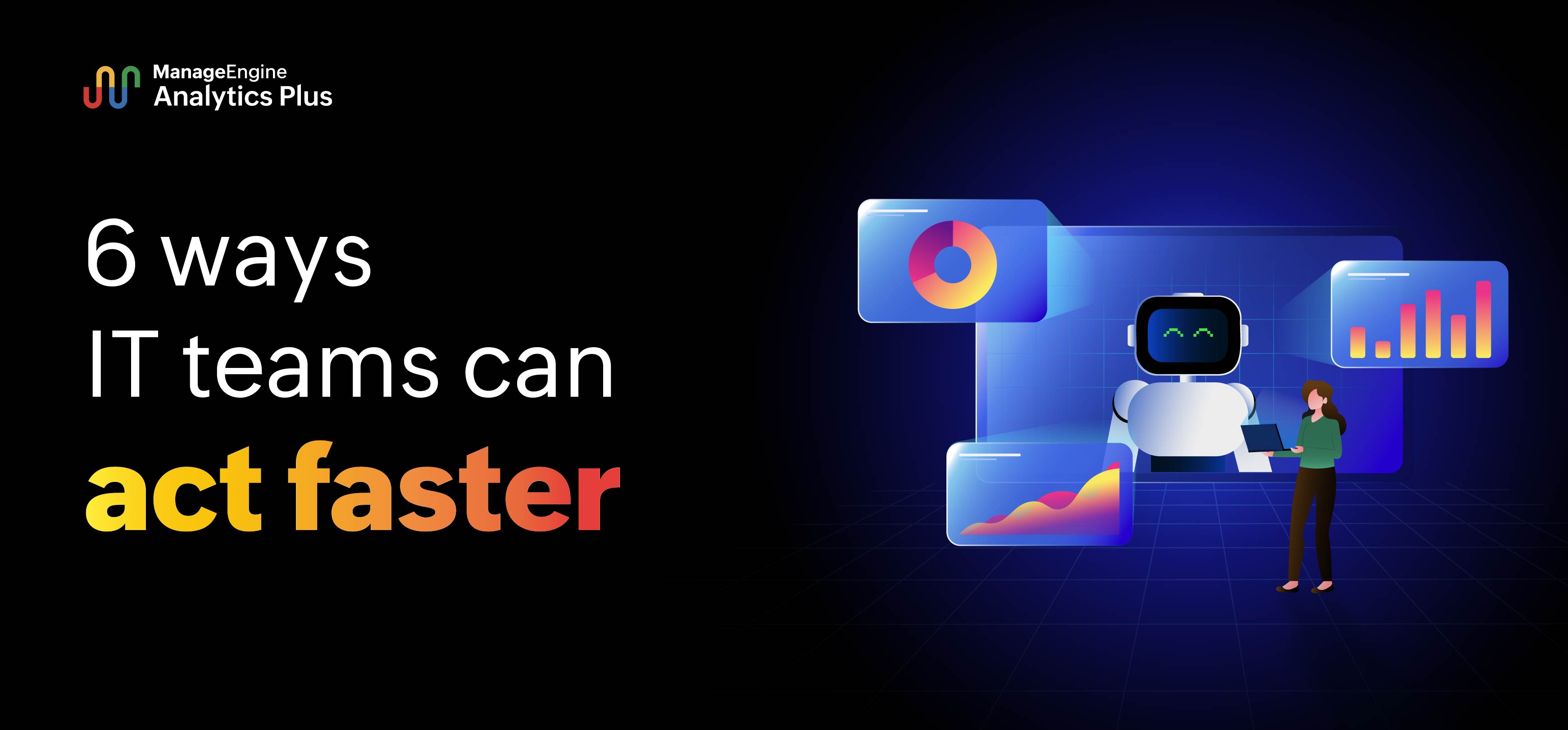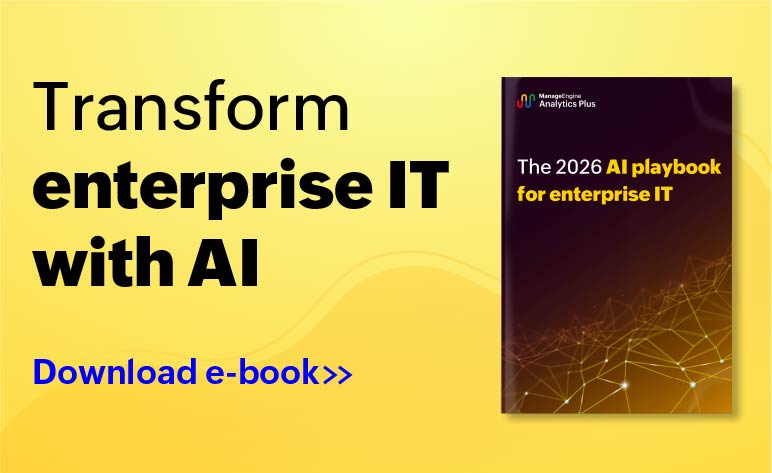- HOME
- ITSM Analytics
- Predictive Analytics: Delivering cutting-edge intelligence for business leaders
Predictive Analytics: Delivering cutting-edge intelligence for business leaders
- Last Updated: July 1, 2024
- 679 Views
- 6 Min Read
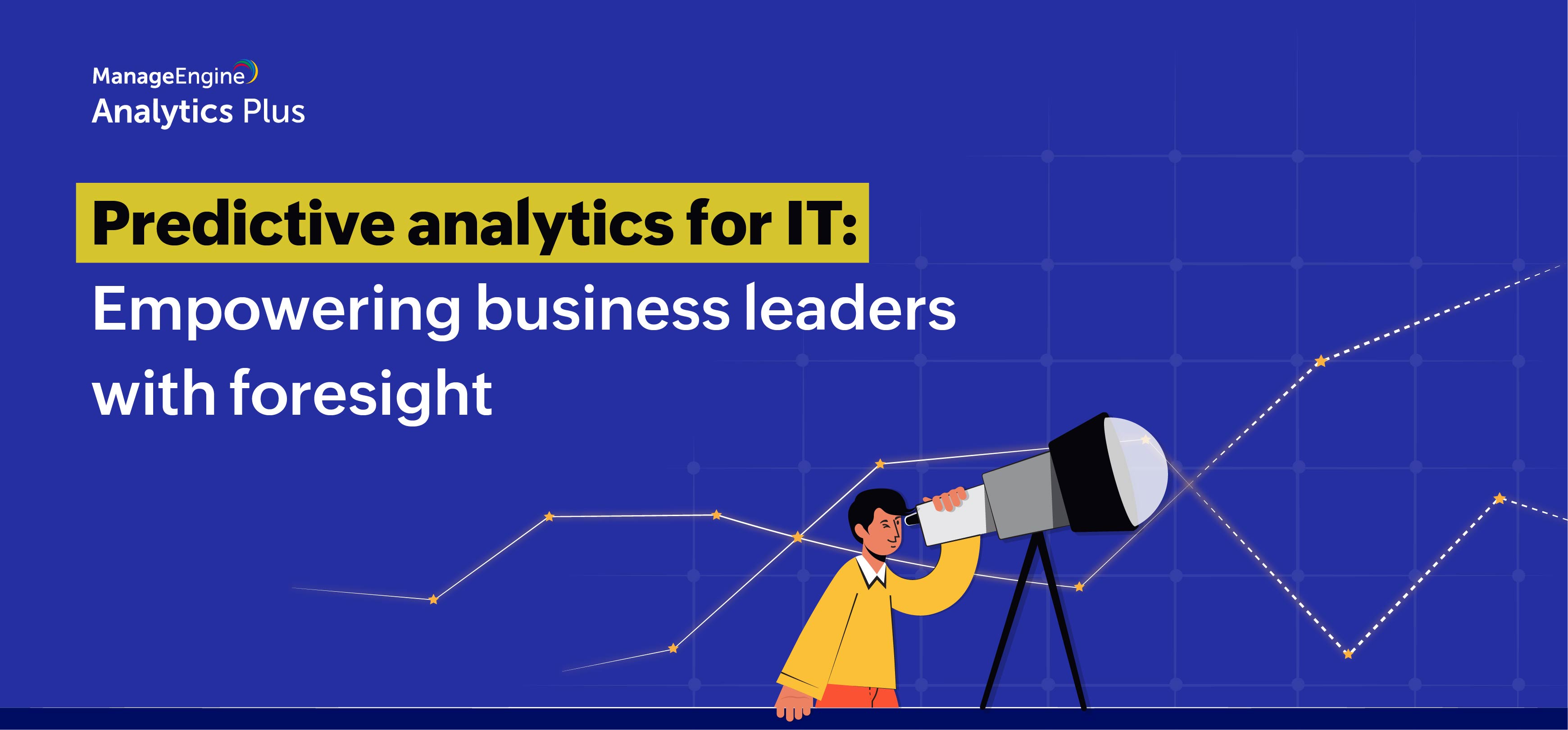
Jean is an IT manager who invests intelligently in IT infrastructure by directing resources based on demand. As a result, his organization witnesses fewer incidents and downtime, and its servers are always available. Sarah, an IT manager for a similar-sized organization, overshoots her budgets frequently and faces recurring incidents that result in services being down for hours, which leads to huge losses for the business. The only difference is that Jean utilized Predictive Analytics to plan infrastructure needs based on usage and capacity, while Sarah did not.
Running IT operations efficiently requires effective planning backed by an accurate forecast of future demands. Let’s see how Predictive Analytics can empower business leaders with foresight.
What is predictive analytics?
Predictive analytics by definition refers to employing statistical modeling and data mining techniques on the current and historical data to predict future outcomes. As a branch of advanced analytics, predictive analytics enables you to find opportunities, beware of risks, and readjust your work to achieve desired results regardless of changes.
What is the importance of predictive analytics?
With predictive analytics, organizations can discover new opportunities or get prior warnings in to threats. This enables them to always be one step ahead of the competition and environmental changes by forecasting what is going to happen next, developing their strategies, and staying hassle-free.
Consider this scenario: Your organization prefers to plan the IT budget using manually predictions. However, you're concerned about the accuracy of those numbers, and want to base budget predictions based on a concrete strategy. Predictive analytics can help you strategically forecast IT budget based on historical IT budget data, and thereby reduce your risk potential.
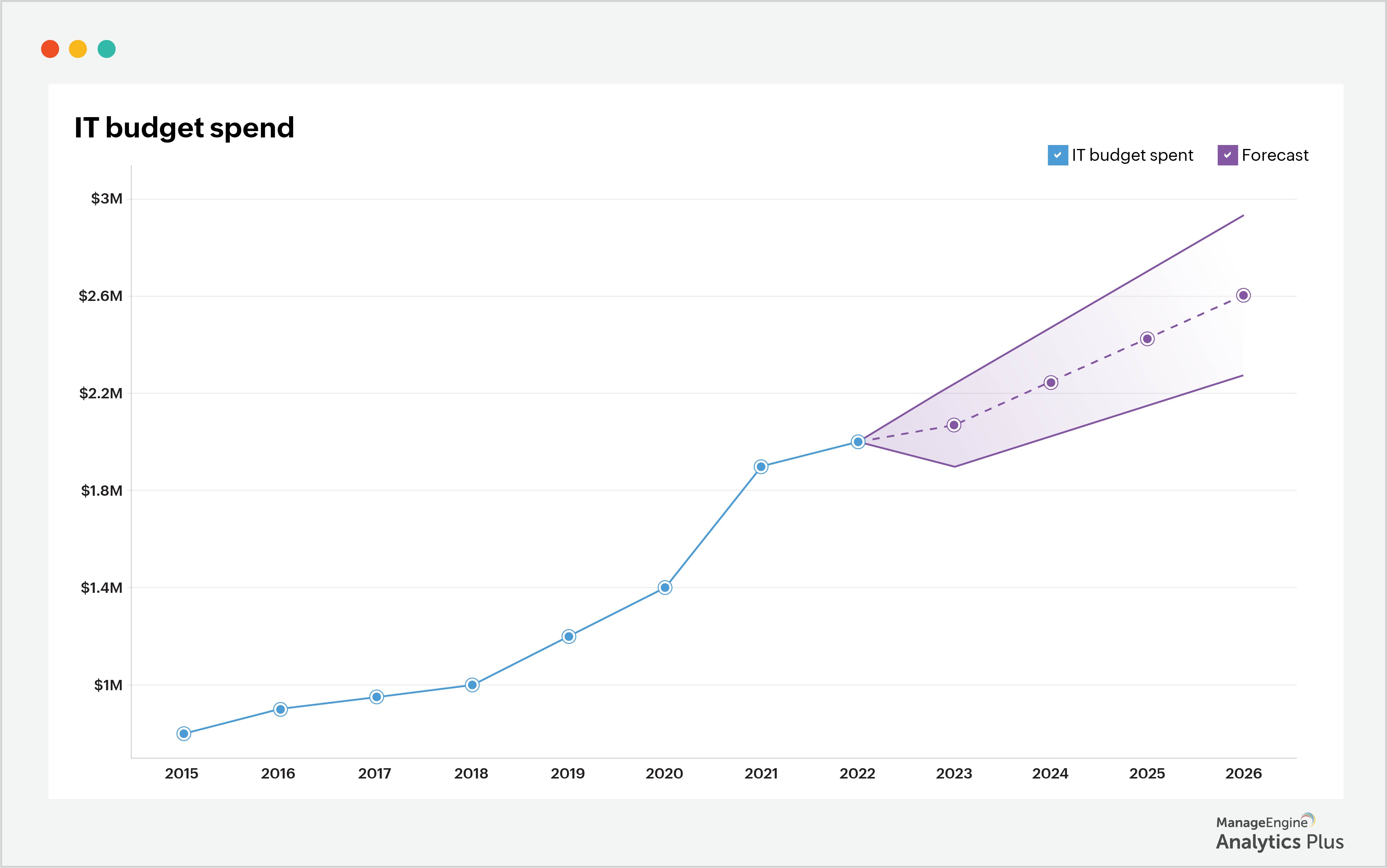
The above report shows an example of an IT budget trajectory report of eight years and the forecasted budget for the next four years.
How does predictive analytics work?
Creating a reliable, data-backed prediction for the future involves a few stages or steps such as identifying trends, seasonality, and randomness in data, selecting the forecasting models, verifying the forecasting model, assigning confidence levels, and finally, delivering the forecast. AI-based algorithms can identify hidden trends and recurring patters in your data set in seconds; selecting and verifying the predictive model is done systemically. First, a machine learning model is built where multiple forecasting algorithms run on historical data. The results are then compared against current trends to see how accurate the predictions were. Forecasting algorithms are assigned confidence levels (in percentages) based on how good they were to actual results. Finally, the best forecasting algorithms are selected to deliver the actual forecast. And of course, all of these processes happen incredibly fast—in a matter of milliseconds.
What are the predictive analytics models?
Numerous models are deployed in predictive analysis, such as forecasting, clustering, time-series, and classification models. A few functional models such as regression, seasonality trend loess decomposition (STL), and auto-regressive integrated moving average (ARIMA) are also employed.
A regression model outlines the relationship between independent variables and one dependent variable.
An STL decomposition model utilizes the trend, seasonality, and randomness of historical data to predict the future outcome. Seasonality refers to the commonly repeated pattern in a data series, and randomness refers to outliers in the data.
An ARIMA model gauges the strength of one independent variable relative to other changing variables.
Though several other similar models exist, the right model for predictive analysis is chosen based on the type of current and historical data.
How can organizations benefit from predictive analytics software?
Predictive analytics has drawn a substantial amount of attention in recent years owing to its many benefits. It enhances decision-making by providing you with valuable information and solutions to challenges. Predictive analytics enables you to gain a competitive advantage and find new opportunities by improving the capacity, quality, and performance of your business.
Most companies use this technique to look into the past performance of their business to get accurate insight on how to optimize their marketing campaigns, identify opportunities, improve efficiency in operations, and proactively improve production.
What are the applications of predictive analytics in IT?
The common application of predictive analytics is to find market trends and potential customers. However, it can have far-reaching benefits for IT. Here are a few common use cases of predictive analysis for IT:
Planning IT asset requirements
Let’s consider a situation where there is a seasonal increase in headcount due to a hiring spree around the end of the academic year. IT teams can map out their IT budgets and strategically plan asset purchases and provision laptops, desktops, and other software required for new joiners.
Forecasting budgets
Aside from being used to forecast yearly budget requirements, predictive analytics can also help IT teams pitch a valid case for senior management to approve their budget requests because it substantiates each request with adequate data on user demands, technological advancements, and other factors.
Predicting asset health
Keeping track of assets and their health can be challenging. Predictive analytics determines when IT assets are likely to fail or exhibit a decline in performance. This buys IT sufficient time to retire older assets and replace them with state-of-the-art tech.
Foreseeing incidents and problems
Predictive analytics enables IT teams to foresee incidents, issues, and problems, buying them plenty of time to proactively fix issues rather than react to incidents after they have occurred. With predictive analytics, IT can save a lot of time, money, and effort that would have been spent otherwise on fixing issues, and ensuring business operations are always online.
Streamlining project management
Delve into dark data—historical project data going back a few years, even decades—to understand areas where issues are most prominent, then use predictive analytics to determine how upcoming projects are likely to be affected by similar bugs. Apply this insight to plan future projects perfectly.
Standardizing revenue
Fluctuations in monthly revenue are common for businesses. Leveraging predictive analytics can help MSPs spot months when revenue is likely to be low. This information can help them plan for additional projects during leaner months so they enjoy a steady stream of revenue each month unfailingly.
Crafting new services to achieve the best satisfaction scores
Predictive analytics combined with in-depth analysis of user survey results can be used to assess the types of products and services that are most helpful to end-users. This can be used to create new product offerings as well as create standards for service quality to achieve desired user satisfaction scores.
Adhering to project deadlines
Analytics deployed in analyzing project progress can help determine if projects are on track. Predictive analytics can take this a step further and determine if projects are likely to drag past their due dates. This foresight can help project leaders pump in additional resources or apply course corrections and complete projects on time.
Predicting and preventing cyberattacks
Predictive analytics can help organizations analyze anomalies in user and system behavior to detect vulnerabilities and thwart attacks. For instance, historical data of attacks and threats can be fed into predictive analytics algorithms to recreate potential scenarios ripe for similar attacks. This can then be used to fortify an organization’s security stance and secure its data from cyberattacks.
“Predictive analytics” may sound a bit challenging and cause innumerable questions about its applicability to the data you possess, its reliability, and its outcome. However, predictive analytics holds endless benefits, some of which we explored in this article, giving rise to another question: What will be the most convenient tool for you to explore predictive analytics with minimal effort? Analytics Plus, ManageEngine's IT analytics solution, delivers cutting-edge intelligence, enabling you to import data seamlessly and set up forecasting in minutes. The best-suited forecasting model for your data is computed automatically by Analytics Plus. Automated predictions coupled with a wide range of customizing options for your predicted data ensure predictions are highly accurate. If you'd like to get a glimpse of the future to make the right decisions and empower your organization with foresight, try Analytics Plus for free today.

